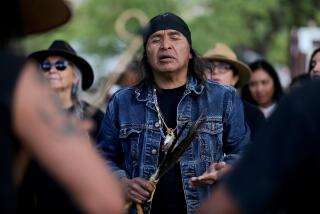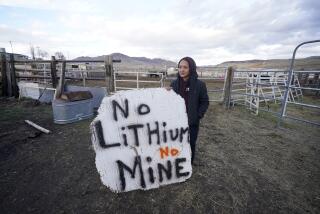Man’s Conviction for Looting Indian Burial Site Overturned
- Share via
SAN FRANCISCO — A federal appeals panel has overturned Alaska’s first conviction under a congressional act protecting ancient remains and burial sites from looters.
A three-judge panel of the 9th U.S. Circuit Court of Appeals said Thursday that the government must prove that people who remove ancient findings from federal lands knew the remains were an “archeological resource,” or at least 100 years old.
The case involves a man who discovered a 1,400-year-old skull at an eroded Indian burial site while deer hunting near Prince of Wales Island in southeast Alaska.
Last year, Ian Lynch pleaded guilty to violating the 1979 Archeological Resources Protection Act and was sentenced to three months in jail and fined $7,500. Authorities agreed that Lynch could appeal his case before serving his sentence.
The appeals panel ruled that Lynch can withdraw his plea that he illegally took a child’s skull at the Warm Chuck Village and Burial Site, which contains the remains of an Alaskan native village. When sentenced, Lynch said he didn’t intend to anger the native community when he found and took the skull, which was covered by moss and grass on a hillside.
The appeals court said that, if authorities wish to proceed with the case, they must prove that Lynch, who worked in a supermarket, knew the “human remains he found were archeological resources and that they possessed value other than the satisfaction of his curiosity.”
The court said Congress intended the law to discourage looting and grave robbing by those seeking commercial gain.
Assistant U.S. Atty. Steven E. Skrocki in Anchorage declined comment on whether prosecutors would try Lynch, who is not an archeologist.
Mary C. Geddes, Lynch’s public defender, said archeologists who examined the skull for prosecutors were unsure whether it was at least 100 years old. Only after cutting a piece from the skull and performing an in-depth analysis did they learn it was 14 centuries old.
“The question at trial is whether he knew he had an archeological resource in hand,” Geddes said. “The government had to cut a piece out of it and send it to the laboratory to find out.”
More to Read
Sign up for Essential California
The most important California stories and recommendations in your inbox every morning.
You may occasionally receive promotional content from the Los Angeles Times.













